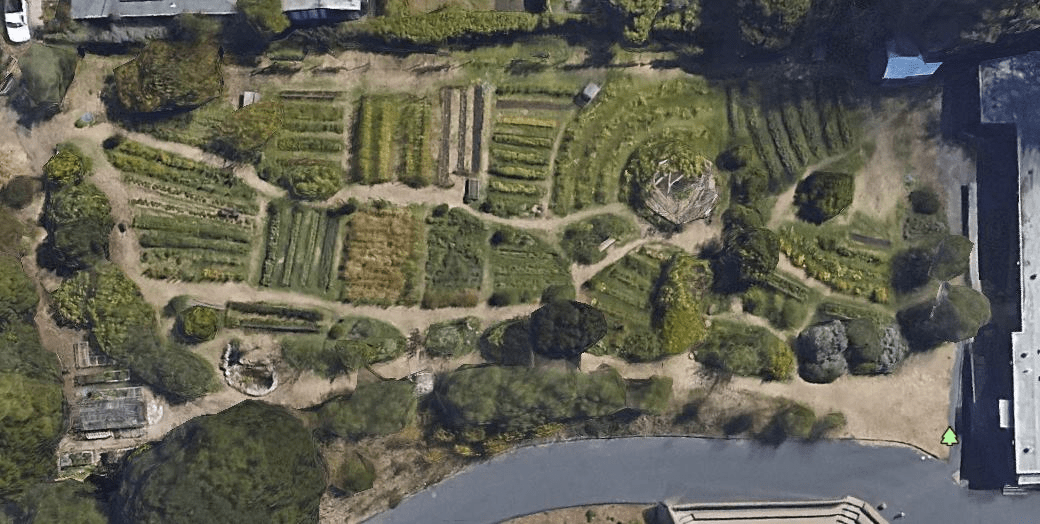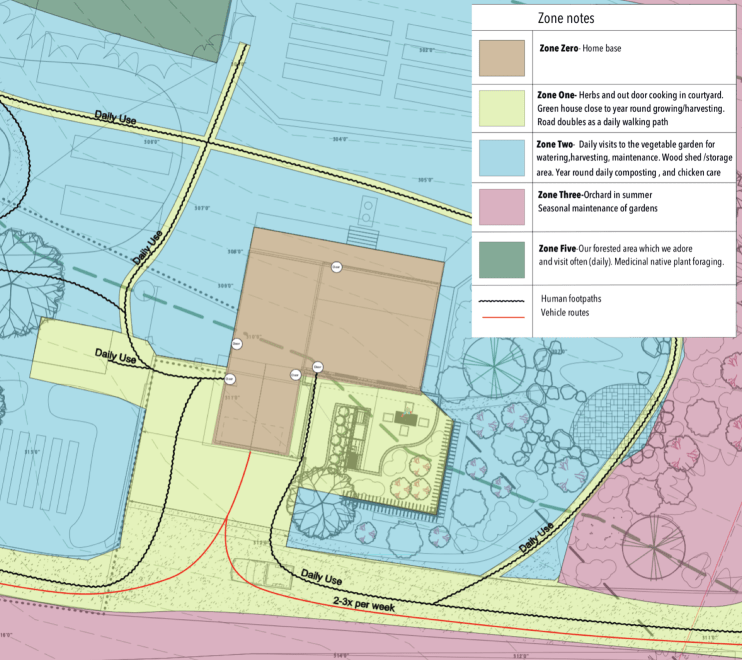*Image above is the Beacon Food Forest Community Garden, Seattle, Washington
One of the strengths of permaculture design is its use of zones within this landscape design process. When using zones to guide us during the design process, it allows us to observe and take into account human traffic patterns.
These zones also represent different levels of maintenance and the frequency of visits. When we realize or analyze our human traffic patterns, we ensure that we place elements in locations that align with our movements. One example of this would be putting a clothesline close to your house or zone one.
We also find that these zones will radiate out from a residence or main area of activity, zone one being the closest, where zone five represents our un-managed wilderness areas.
Zones represent different uses and frequencies of visitation to an area of your property. These can range from daily to monthly basis. When we initially purchased our acreage property in Lantzville, the bottom ½ of our property was only visited a few times each year. Mainly due to limited access. If we look at the chart below, this land would be considered a zone 4 or semi-managed area.
Here’s a quick reference for each zone:
How can we best use this information when making decisions in our landscape?
As with other aspects of the permaculture design process, the use of zones can significantly reduce the amount of time and energy we spend maintaining our landscapes. An example of this might be placing your kitchen garden close to the outside entrance of your kitchen. Where I live, we are very fortunate that our kitchen is on the south side of our house, and it’s a quick and natural movement to go outside for some salad greens or herbs to enhance our meals. We can also keep an eye on these beds since we walk past them regularly, along with reducing the amount of infrastructure, such as access to water required on a site.
Below is a partial image of the zone on our property. You can see that zone one, shown below in yellow, is an area we visit daily. When we place design elements such as woodsheds and chicken coops, we want to consider these pathways and how we can potentially increase our efficiency when working in our landscape.
The next time you consider adding or making changes to your landscape, consider the value of permaculture design, and how it uses zones as part of its holistic approach.
Jamie Wallace
Co-owner of Jaan Designs
Regenerative land designer, educator
Source:https://open.oregonstate.education/permaculture/chapter/zones/




